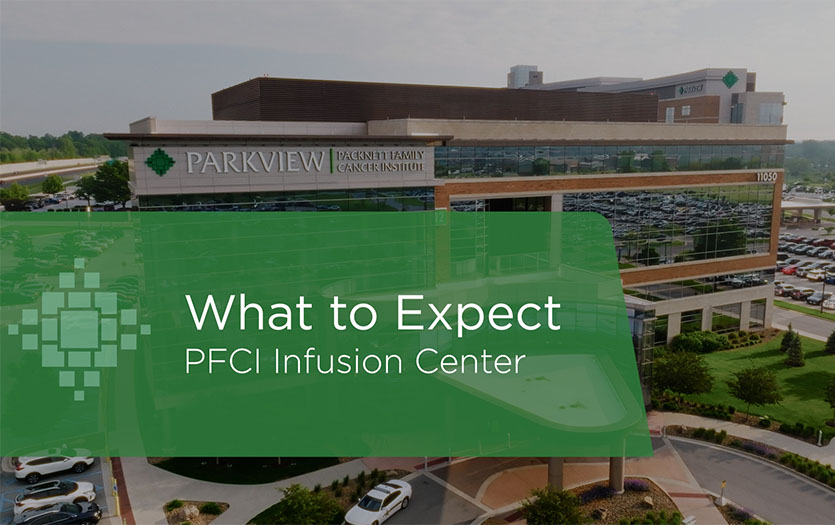
To celebrate the 50th anniversary of the invention and first application of the angioplasty balloon, we asked Hollace Chastain, MD, PPG - Cardiology, Parkview Heart Institute, to give us a brief history lesson on how this groundbreaking development altered the landscape of cardiovascular medicine as well as setting a precedent for personalized patient care.
Can you share why the 50th anniversary is so significant to Parkview Heart Institute?
In March of 1974, German physician-scientist, Andreas Grüntzig, utilized a balloon-tipped catheter to re-open a constricted femoral artery for the first time. Prior to this medical innovation, surgeons used the Dottering Technique, named after Dr. Charles T. Dotter. Dotter worked closely with Grüntzig and both received a nomination for the Nobel Prize in Physiology of Medicine in 1978.
It was done by using serial dilation catheters. Surgeons would insert a small catheter, then a slightly larger one and repeat this process until they reached the desired circumference. During this time, every patient with severe artery blockage needed to undergo bypass surgery. Because this is a lengthier procedure, it resulted in a longer recovery for patients. Grüntzig discovered that this process could be made much easier if only they used a balloon.
Grüntzig gathered supplies from the hospital, went home and made catheters right there on his kitchen table! Using x-rays of previous patients who had blockages, he custom made balloons based on those patients. This was also one of the first examples of a customized model of care.
Because of his amazing insight, balloon angioplasty became the preferred methodology to treat patients with acute myocardial infarction or occluded leg arteries, which saves patients from further disability by preventing leg amputations. Because it works so well, almost everything we do now in the periphery and in the heart involves angioplasty.
Why is angioplasty considered crucial in cardiovascular care?
Angioplasty is a huge part of medical care, management of coronary heart disease and improving people’s lives. We do angioplasty now to stop heart attacks. It literally saves people’s lives. We perform about 1,200 coronary interventions and 800 peripheral interventions per year. It’s a big part of our service line and the needs of our patients.
Without angioplasty, people would die prematurely or lose limbs. They wouldn’t be able to walk and would have to quit working earlier. Not as many people need bypass surgery as much as they used to. Bypass is still a very good treatment for the right patients, but we can do so much more without it. A patient I just worked on today, is going home this afternoon. Back then a patient may have spent two or three weeks recovering in the hospital. Now it’s closer to a week and then they continue healing at home.
How does Parkview Heart Institute prioritize patient comfort and well-being?
During procedures, we have a circulating nurse in charge of administering medication and assessing them, and I talk to the patient because they’re awake. We can tell if a patient is fidgety, and we ask them, “Is your back hurting you?” or “Are you feeling anxious?”
We also do what is called an IV conscious sedation, which is usually in the form of Fentanyl and Versed. People can get a little scared when I say Fentanyl, but I remind my patients that it is a good and safe drug when used for medical indications and under medical and nursing supervision. It’s short-acting, causes minimal nausea and is a pain killer that makes the procedure more pleasant for patients. We also use local anesthesia at the access sites and intermittently depending on the patient and procedure. Most patients, when they get done, if they have never had the procedure, are pleasantly surprised how comfortable they were.
Why is it important for people in the communities we serve to have access to this procedure from providers they can trust?
We emphasize quality of care and improving the patient's quality of life. I think it's been said over the years, excellent care for every patient, every day and that's our goal. For people who have debilitating symptoms like chest, arm, neck or jaw pain, shortness of breath or cramps in their legs, it absolutely improves their quality of life. People sometimes come to me, and they can't work because of all these symptoms. After the care and procedures, they’ve received at the heart institute, they can go back to work. They can carry on with their job full time and support their family and loved ones. By being aggressive with these procedures and helping revascularize patients, whether it be by balloon angioplasty, stents, lasers or even surgery, we allow them to heal and recover faster. And that's important.
Is there anything that Parkview Heart Institute is doing to enhance angioplasty?
One of my roles as the medical director is following the medical literature closely and staying informed. There are always new techniques and technology coming out, like new catheters and even drug-eluting balloons, which deliver a drug to the wall of the vessel with a balloon that inhibits scar tissue buildup and helps keep the vessel open. We don’t use technology just to use technology. They must be of good use and safe for our patients for us to bring them in and adopt them.
Through our partnership with the Cleveland Clinic we have been able to collaborate and remain a leader for cardiovascular healthcare in our community.
Final thoughts
As we reflect on 50 years of angioplasty, we extend our gratitude to medical pioneers like Dr. Grüntzig. May their passion and dedication for personalized patient care continue to inspire us as we strive to improve our patients’ quality of life and longevity.
Learn more about the services offered at the Parkview Heart Institute by visiting us here.



